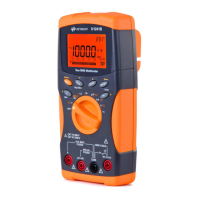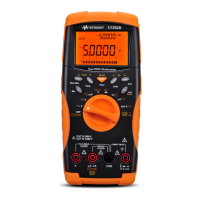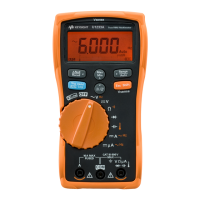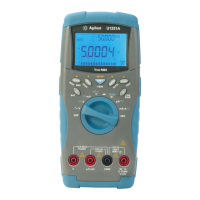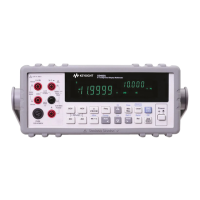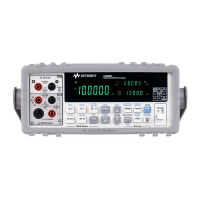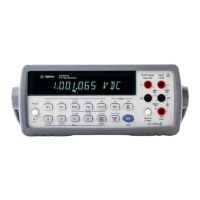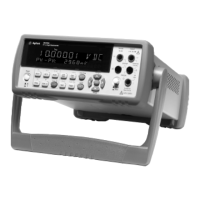Performance Tests and Calibration 5
U1241A/U1242A User’s and Service Guide 41
Test Considerations
Error may be induced by AC signals that present on the input leads. Long
test leads can also act as an antenna causing pick- up of AC signals.
For optimum performance, all procedures should comply with the
following recommendations:
• Ensure that the calibration ambient temperature is stable and between
18 °C and 28 °C. Ideally the calibration should be performed at 23 °C
± 2 °C.
• Ensure that the ambient relative humidity (RH) is less than 80%.
• Ensure that the low battery indicator does not appear during the
performance verification test. If it does, replace the batteries to avoid
any inaccurate reading.
• During temperature performance verification test, ensure that the meter
has been switched ON and placed in the test environment for at least
one hour with J/K- type thermo- couple connected between the meter
and calibration source.
• Allow one minute warm- up period with a Shorting Plug connected to
the V and COM input terminals.
• Use shielded twisted pair PTFE- insulated cables to reduce settling and
noise errors. Keep the input cables as short as possible.
• Connect the input cable shields to earth ground. Except where noted in
the procedures, connect the calibrator LO source to earth ground at the
calibrator. It is important that the LO to earth ground connection be
made at only one place in the circuit to avoid ground loops.
During DC voltage, DC current, and resistance gain verification
measurements, ensure that the calibrator's "0" output is correct. It is
recommended to set the offset for each range of the measuring function
being verified.
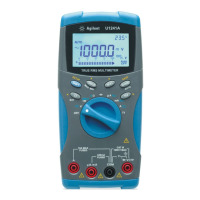
